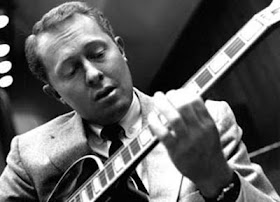
Look in the popular guitar magazines these days and you’ll see ads for all kinds of exotic picks – some costing $20 or more. Even though I’ve been quite happily using a Jim Dunlop Jazz III pick for years, I decided to find out if any of these high-end picks would improve my tone.
One manufacturer that promises a lot for a reasonable price (about $5 per pick) is V-Picks, based in Modesto, CA. They claim to be “the world’s #1 guitar pick” and that their picks will help you play better and sound better. So do they live up to the hype? I ordered a Small Pointed Lite and a Ruby Red Small Pointed from the web site at http://www.v-picks.com/ to find out.
The picks arrived within 2 days, which is great customer service. Another nice surprise was the company included a free pick with my order – a Medium Rounded. All picks are considerably thicker than typical picks, even compared to the Jazz III. However, they are made from a super slick material that glides over the strings very easily. They also react to the heat from your skin and lightly stick to your fingers, which is a nice bonus as I am often dropping or reorienting my picks. The picks I ordered are more pointed at the tip which I think helps you play faster and more accurately so that’s an advantage. Another plus is that the picks wear slowly and have 3 pointed edges, all of which can be used so one pick will last quite a while.
Because of their thickness and the material used, all the picks deliver a fuller, louder and smoother sound than the Jazz III. The difference in tone is surprisingly significant – but in a good way. These picks seem to take off some harshness while still retaining the high frequencies and also boost the lower frequencies. To my ears, it’s almost like putting a compressor in your chain – but a decent compressor will cost you $100+ and these picks are only $5. Of the three I have tried, I liked the Small Pointed Lite the best as it retained more of the treble frequencies but also delivered a fuller, smoother sound. I never would have picked (no pun intended) the Medium Rounded because it is so thick, but I like this a lot as well, especially for beefing up solos.
Considering the minimal $5 price tag, which is about the price of a set of strings, it's a no brainer to check out a couple of V-Picks. You never know, they might be a decent tone upgrade for you. They were for me.




